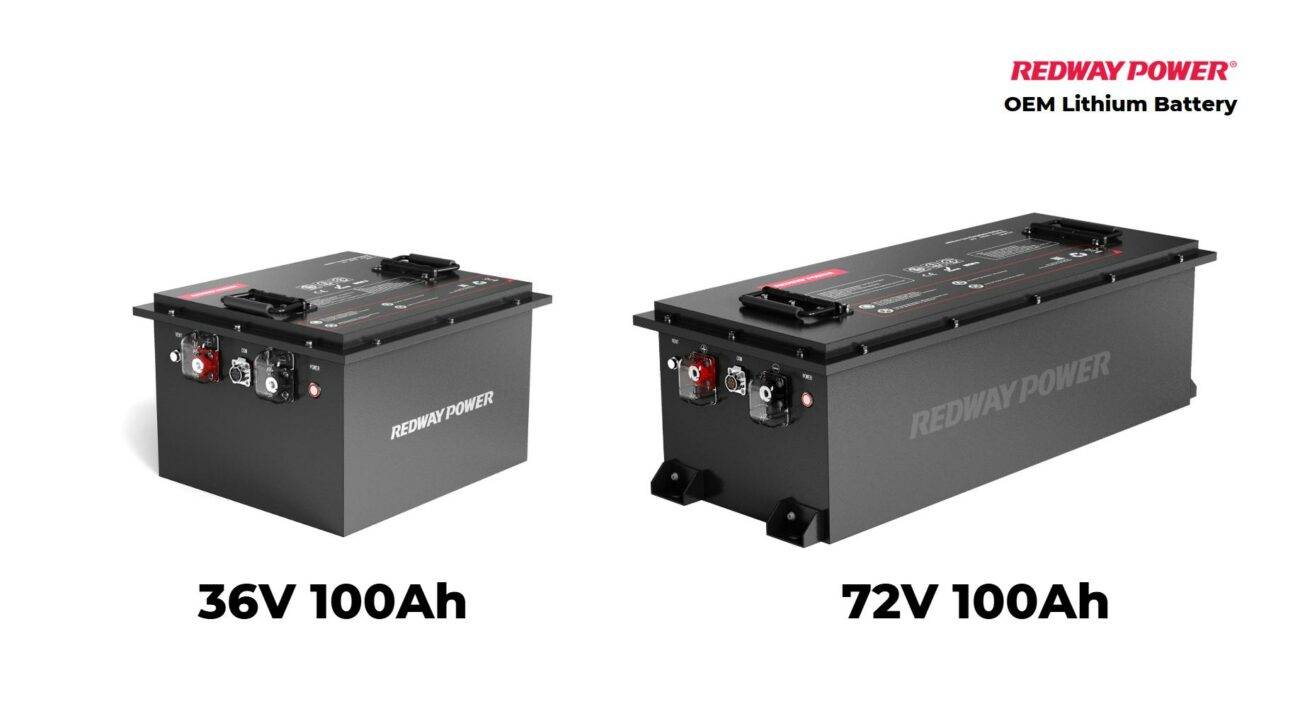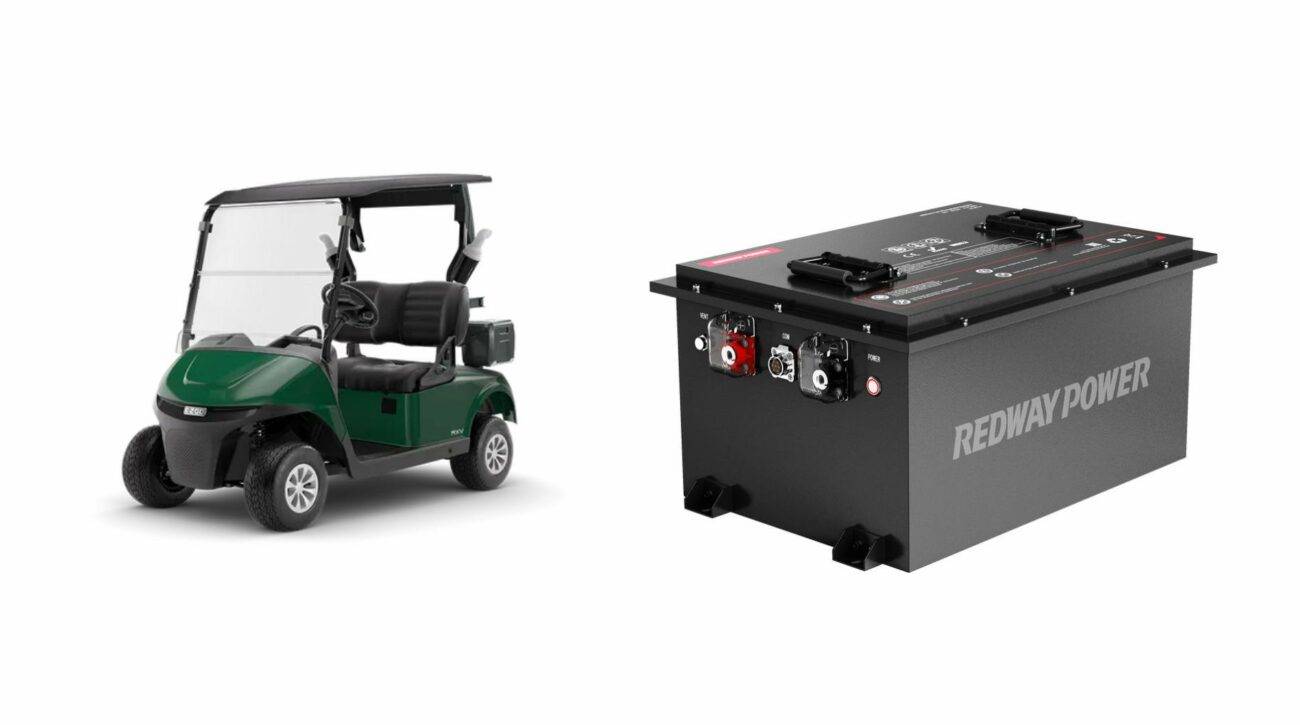- Forklift Lithium Battery
-
48V
- 48V 210Ah
- 48V 300Ah
- 48V 420Ah (949 x 349 x 569 mm)
- 48V 420Ah (950 x 421 x 450 mm)
- 48V 456Ah
- 48V 460Ah (830 x 630 x 590 mm)
- 48V 460Ah (950 x 421 x 450 mm)
- 48V 460Ah (800 x 630 x 600 mm)
- 48V 460Ah (820 x 660 x 470 mm)
- 48V 500Ah
- 48V 560Ah (810 x 630 x 600 mm)
- 48V 560Ah (950 x 592 x 450 mm)
- 48V 600Ah
- 48V 630Ah
-
48V
- Lithium Golf Cart Battery
- 12V Lithium Battery
12V 150Ah Lithium RV Battery
Bluetooth App | BCI Group 31
LiFePO4 Lithium
Discharge Temperature -20°C ~ 65°C
Fast Charger 14.6V 50A
Solar MPPT Charging - 24V Lithium Battery
- 36V Lithium Battery
- 48V Lithium Battery
-
48V LiFePO4 Battery
- 48V 50Ah
- 48V 50Ah (for Golf Carts)
- 48V 60Ah (8D)
- 48V 100Ah (8D)
- 48V 100Ah
- 48V 100Ah (Discharge 100A for Golf Carts)
- 48V 100Ah (Discharge 150A for Golf Carts)
- 48V 100Ah (Discharge 200A for Golf Carts)
- 48V 150Ah (for Golf Carts)
- 48V 160Ah (Discharge 100A for Golf Carts)
- 48V 160Ah (Discharge 160A for Golf Carts)
-
48V LiFePO4 Battery
- 60V Lithium Battery
-
60V LiFePO4 Battery
- 60V 20Ah
- 60V 30Ah
- 60V 50Ah
- 60V 50Ah (Small Size / Side Terminal)
- 60V 100Ah (for Electric Motocycle, Electric Scooter, LSV, AGV)
- 60V 100Ah (for Forklift, AGV, Electric Scooter, Sweeper)
- 60V 150Ah (E-Motocycle / E-Scooter / E-Tricycle / Tour LSV)
- 60V 200Ah (for Forklift, AGV, Electric Scooter, Sweeper)
-
60V LiFePO4 Battery
- 72V~96V Lithium Battery
- Rack-mounted Lithium Battery
- E-Bike Battery
- All-in-One Home-ESS
- Wall-mount Battery ESS
-
Home-ESS Lithium Battery PowerWall
- 24V 100Ah 2.4kWh PW24100-S PowerWall
- 48V 50Ah 2.4kWh PW4850-S PowerWall
- 48V 50Ah 2.56kWh PW5150-S PowerWall
- 48V 100Ah 5.12kWh PW51100-F PowerWall (IP65)
- 48V 100Ah 5.12kWh PW51100-S PowerWall
- 48V 100Ah 5.12kWh PW51100-H PowerWall
- 48V 200Ah 10kWh PW51200-H PowerWall
- 48V 300Ah 15kWh PW51300-H PowerWall
PowerWall 51.2V 100Ah LiFePO4 Lithium Battery
Highly popular in Asia and Eastern Europe.
CE Certification | Home-ESS -
Home-ESS Lithium Battery PowerWall
- Portable Power Stations
Why Should You Use a 36V Lithium Battery for Your Golf Cart?

Using a 36V lithium battery for your golf cart offers numerous advantages, including higher energy density, longer lifespan, and reduced maintenance compared to traditional lead-acid batteries. These features enhance overall performance and efficiency, making lithium batteries an ideal choice for modern golf carts.
What Are the Benefits of a 36V Lithium Battery for Golf Carts?
A 36V lithium battery provides several compelling benefits that significantly enhance the performance and usability of golf carts:
- High Energy Density: This allows for more energy storage in a compact size, enabling longer distances per charge.
- Longer Lifespan: Typically exceeding 2000 cycles, these batteries outlast traditional lead-acid options, which generally last around 500–1000 cycles.
- Lightweight Design: The reduced weight improves handling and acceleration while decreasing wear on the cart’s components.
- Fast Charging Capabilities: Many lithium batteries can be fully charged in just a few hours, minimizing downtime.
- Low Maintenance Requirements: Unlike lead-acid batteries, lithium batteries require minimal upkeep—no need for water refills or equalization charges.
Chart: Comparison of Lifespan
| Battery Type | Average Lifespan (Cycles) | Maintenance Required |
|---|---|---|
| Lead-Acid | 500 – 1000 | Frequent water refills |
| Lithium-Ion | Over 2000 | Minimal |
How Does a 36V Lithium Battery Improve Golf Cart Performance?
A 36V lithium battery enhances golf cart performance through various mechanisms:
- Consistent Power Output: Provides stable voltage levels throughout its discharge cycle, ensuring reliable performance in demanding situations.
- Quick Discharge Capabilities: Ideal for applications requiring rapid bursts of power during acceleration or hill climbing.
- Efficiency in Energy Conversion: Converts stored energy into usable power with minimal loss, translating to longer runtimes.
Chart: Performance Metrics Comparison
| Metric | Lead-Acid | Lithium-Ion |
|---|---|---|
| Voltage | Lower | Higher |
| Acceleration | Moderate | High |
| Range per Charge | ~40 miles | ~60 miles |
What Are the Key Features of 36V Lithium Batteries?
Key features that make the 36V lithium battery an attractive option include:
- Built-in BMS (Battery Management System): Ensures safe operation by preventing overcharging and overheating.
- Temperature Tolerance: Performs well across a wide temperature range, ensuring reliability in various conditions.
- Compact Size: Facilitates easy installation in tight spaces without compromising power output.
How Long Do 36V Lithium Batteries Last?
A well-maintained 36V lithium battery can last over ten years with proper care, offering substantial longevity compared to traditional lead-acid batteries that generally last only two to three years.
What Are the Cost Considerations for 36V Lithium Batteries?
While the initial cost of a 36V lithium battery is higher than that of lead-acid alternatives, the long-term savings from fewer replacements and lower maintenance costs make them more economical over time.Chart: Cost Analysis Over Time
| Cost Factor | Lead-Acid | Lithium-Ion |
|---|---|---|
| Initial Cost | Lower | Higher |
| Replacement Frequency | Every few years | Every decade |
| Maintenance Costs | Higher | Lower |
Which Brands Manufacture 36V Lithium Batteries for Golf Carts?
Several reputable brands produce high-quality 36V lithium batteries suitable for various applications:
- BSLBATT: Known for high efficiency and long lifespan.
- RoyPow: Offers robust performance with excellent customer support.
- Eco Battery: Provides competitive pricing along with reliable products.
What Applications Are Suitable for a 36V Lithium Battery?
These batteries are ideal not only for golf carts but also for various applications such as:
- Electric scooters
- E-bikes
- Renewable energy storage systems
- Industrial equipment
How Do 36V Lithium Batteries Compare to Lead-Acid Batteries?
When comparing lithium-ion batteries to lead-acid options, lithium-ion systems provide superior performance, longer lifespans, and lower maintenance needs, making them more suitable for modern electric vehicles.
How Do Environmental Conditions Affect Battery Performance?
Environmental factors such as temperature can significantly influence battery efficiency; extreme heat can accelerate degradation while cold temperatures may reduce charging efficiency.
What Maintenance Practices Can Extend Battery Life?
To maximize the longevity of your lithium ion battery:
- Regularly check connections to ensure they are clean and secure.
- Store batteries at moderate temperatures to avoid extreme conditions.
- Follow manufacturer guidelines regarding usage limits.
What Safety Features Are Integrated into 36V Lithium Batteries?
Safety features commonly found in these batteries include:
- Overcharge Protection: Prevents damage from excessive voltage.
- Thermal Management Systems: Monitors temperature to avoid overheating.
- Short-Circuit Protection: Safeguards against electrical failures.
Expert Views“Switching to a lithium ion battery not only enhances your golf cart’s performance but also significantly reduces long-term costs,” states Dr. Emily Chen, an expert in battery technologies. “Understanding these benefits allows users to make informed decisions that align with their needs.”FAQ Section
- What is the average lifespan of a lithium ion battery?
Typically over ten years with proper maintenance. - Are there any safety concerns with using lithium ion batteries?
When used correctly with appropriate safety features, they are generally safe; however, improper handling can lead to risks such as overheating. - How much does a typical 36V lithium ion battery cost?
Prices vary widely based on capacity and brand but generally start from ₹46,000 for lower capacities. - Can I use my existing charger with a new lithium ion battery?
No, it’s essential to use chargers specifically designed for your battery type to avoid damage or safety hazards. - What should I do if my battery shows reduced performance?
Check connections, ensure proper charging practices are followed, and consult manufacturer guidelines if issues persist.






















